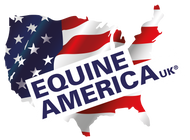Glucosamine – comparing the different types

Glucosamine is an ingredient commonly found in joint supplements, known for its chondroprotective properties but what should you be looking for when reading the label?
There are 3 commonly used forms of glucosamine:
- Glucosamine Hydrochloride (HCl)
- Glucosamine Sulphate (2KCl)
- N-Acetyl-D-Glucosamine
Glucosamine HCl is supported by research and has greater purity and stability properties compared to glucosamine sulphate, providing over 20% more glucosamine on a weight for weight basis. This means, 12,000mg of glucosamine HCl (a typical daily serve), is not the same as 12,000mg of glucosamine sulphate. Glucosamine HCl is typically 83% actual glucosamine and glucosamine sulphate is typically only 60% actual glucosamine. Therefore, a supplement providing 12,000mg glucosamine HCl per serve actually provides 10,300mg glucosamine, whereas a supplement stating 12,000mg glucosamine sulphate per serve only provides 7200mg actual glucosamine.
N-acetyl-D-glucosamine is a glycosaminoglycan (GAG) precursor. This form of glucosamine provides an alternative source of glucosamine that is particularly important in supporting the horses’ own anti-inflammatory processes.
The recommended daily intake of glucosamine for chondroprotection is a minimum of 10,000mg per day, which may be reduced to 5000mg per day maintenance.
Equine America products use glucosamine hydrochloride in: Glucosamine HCl 12,000, Kentucky Advanced Powder and Kentucky Joint Liquid. Kentucky Advanced Powder also contains N-acetyl-D-glucosamine.
 Skip to content
Skip to content

